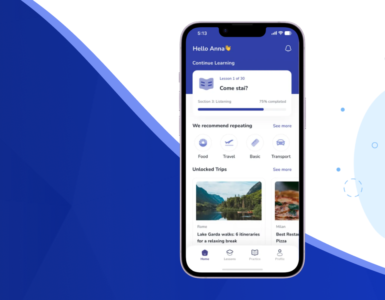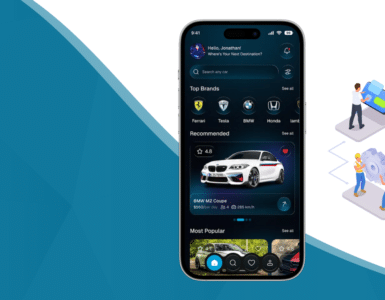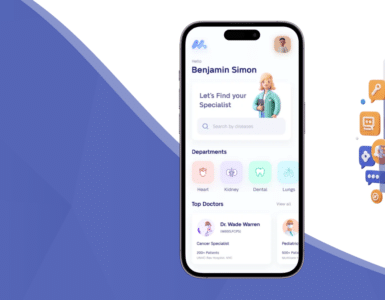Which names come to your mind when you think of marketplace applications? While Airbnb and Uber are service-focused digital marketplaces, Amazon is known for product-based transactions. But the market is ripe, and you can still take advantage of it. Online sales are growing rapidly, and a well-built marketplace app can give you access to a booming industry.
Why not build your own marketplace app by hiring a team of experienced developers and designers?
Know the Basics: What Is a Marketplace App?
A marketplace is a platform that brings together buyers and sellers to facilitate transactions. It spans across various niches—from product selling and services to rentals. Examples of successful online marketplaces include:
- Airbnb (rentals)
- Etsy (handmade products)
- Upwork (freelance services)
- Uber (ridesharing)
A marketplace app development company will typically start with an MVP (Minimum Viable Product) and continue refining it with custom features based on your needs.
How to Build a Marketplace App: Step-by-Step Guide
1. Identify the Must-Have Seller Features
When developing a marketplace app, you’re catering to both sellers and buyers. Below are the core features needed for online sellers:
- Order management
- Inventory control
- In-app messaging or built-in chat
- Customer discounts and promotional tools
- Transaction management
- Advanced analytics and sales insights
- Integration with social media platforms

2. Must-Have Features for Buyers
Your buyer’s panel should offer a smooth, intuitive experience. An engaging UI/UX helps gain users’ trust and supports secure transactions.
Essential buyer-side features:
- Advanced search with filters (price, category, popularity, location)
- Wishlist
- User reviews and ratings
- Shopping cart
- Order tracking system
- Multiple payment gateways
- Return and refund policies
3. Focus on UI/UX: Make It Intuitive
Your marketplace app’s success heavily relies on UI/UX. Clean design, easy navigation, and responsive elements enhance user satisfaction.
Start with an MVP. It’s a cost-effective way to test market response before full-scale development. According to Forbes, MVPs help identify key features early and reduce risk.
4. Choose the Right Tech Stack
Choosing modern technologies makes your app scalable, secure, and fast. Most developers prefer:
- React Native – for cross-platform mobile apps
- Next.js and Nest.js – for frontend and backend web development
- MongoDB or PostgreSQL – for database solutions
Learn more about modern mobile app development technologies here.
5. Start with an MVP
An MVP gives you a working prototype to test in the real market.
Benefits of an MVP:
- Uncovers development challenges early
- Confirms product-market fit
- Collects user feedback for improvement
- Makes it easier to add complex features later
Once feedback is collected, your team can build, test, and launch the full version confidently.
6. Understand Digital Marketplace Types
There are various marketplace types, and your development model depends on your chosen category:
- Peer-to-Peer (P2P)
- Also called Customer-to-Customer (C2C), P2P marketplaces allow individuals to sell or rent products/services directly.
- Examples: Etsy – for handmade goods / Uber – for ridesharing services
- Business-to-Customer (B2C)
- Businesses sell directly to consumers. No third party is involved.
- Example: AliExpress – offers thousands of products directly to end-users.
- Business-to-Business (B2B)
- Companies offer services/products to other businesses.
- Example: Alibaba – features C2C, B2C, and B2B segments.

7. Vertical vs. Horizontal Marketplaces
Understanding this distinction helps shape your marketing and product strategy.
- Vertical Marketplaces
- Target a specific niche or industry. While it limits the audience size, it offers higher engagement and conversion rates.
- Example: StockX – for sneaker resales.
- Horizontal Marketplaces
- Cover multiple categories and industries. They are cost-effective and appeal to a larger user base.
- Example: Amazon – sells everything from electronics to groceries.
8. Choose a Financial Model
Your monetization model determines how your app earns revenue:
- Listing Fee Model – sellers pay to list their products/services.
- Subscription Model – users pay a monthly fee to access premium features.
- Commission Model – you earn a percentage from every transaction.
Learn how apps like Fiverr and Airbnb monetize via commissions.
9. Basic Features You Can’t Miss
Login/Signup Process
Simplify registration. Offer social media logins to reduce friction.
Buyer’s Dashboard
A simple, functional buyer interface is critical. It should clearly display:
- Product details
- Delivery options
- Payment methods
- Price breakdown
Vendor Dashboard
Let vendors manage their profile, product listings, fonts, colors, and payment options with ease.
Secure Payment Gateways
Use PCI-compliant, SSL-certified payment gateways to protect transactions. Popular gateways include Stripe, PayPal, and Razorpay. More on PCI compliance here.
Reviews & Ratings
Let customers rate sellers and products. This builds transparency and credibility.
Personalized Notifications
Send alerts about:
- Discounts and promotions
- Order updates
- Recommendations based on previous searches
24/7 Customer Support
Integrate AI-powered chat support to handle queries efficiently. Tools like Zendesk or Freshchat can improve user satisfaction.
Final Thoughts
In today’s hyper-digital world, building a marketplace app is a profitable and scalable venture. While competition exists, the right features, intuitive UI/UX, and robust monetization model will help your app stand out.
Whether you’re creating a niche vertical platform or a horizontal all-in-one app, the opportunity is now.
Build the Uber of Tomorrow—Today by investing in innovative tech, customer-centric design, and a powerful marketplace infrastructure.
























